Ramsdell House
Introduction
Text-to-speech Audio
Images
The Ramsdell House was built in 1858 and is perhaps the oldest surviving structure in Ceredo.

Boot maker, Civil War veteran, postmaster, state senator, and education advocate, Z. D. Ramsdell was one of Ceredo's most prominent citizens.
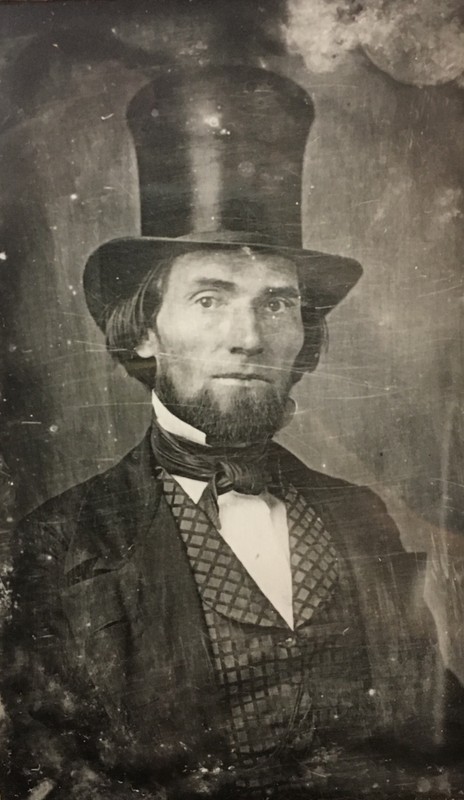
Almeda Ramsdell (1819-1904), wife of Zophar.
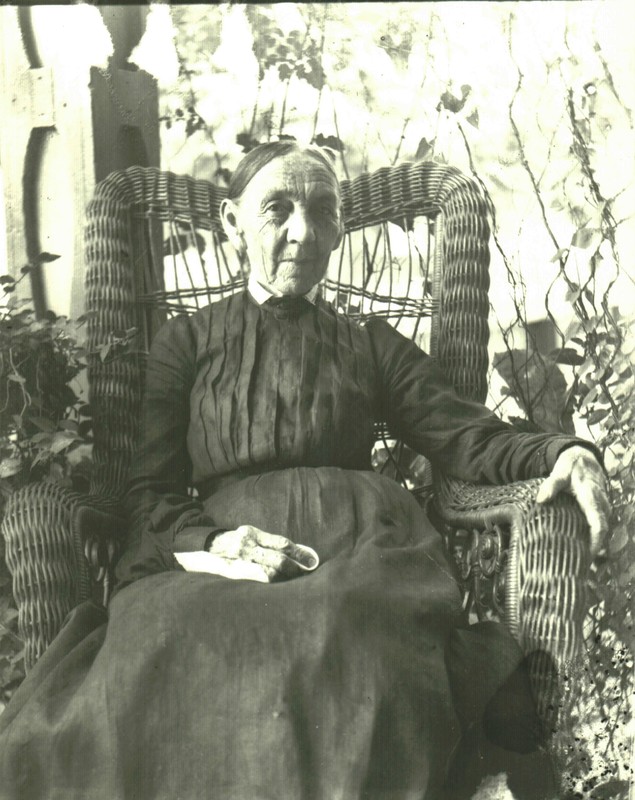
The Ramsdell House during the flood of 1937.
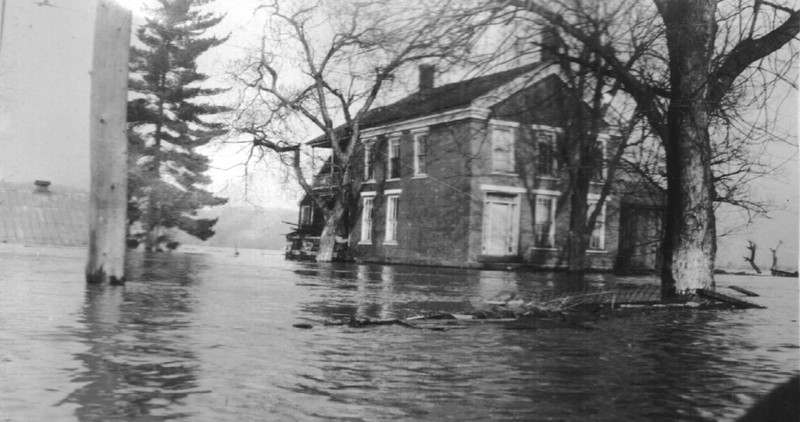
The house underwent an intensive restoration effort in 1985 to save it from deteriorating.
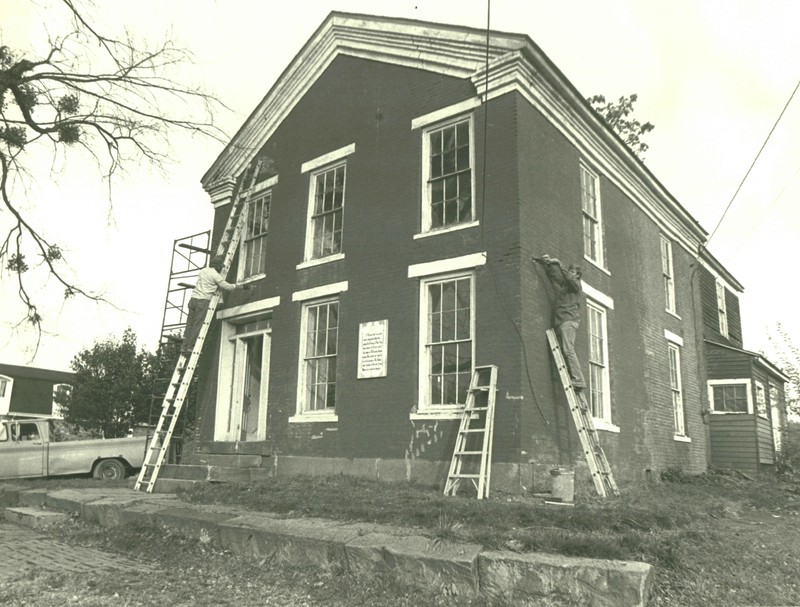
The house sometime after its initial restoration in the 1980s.
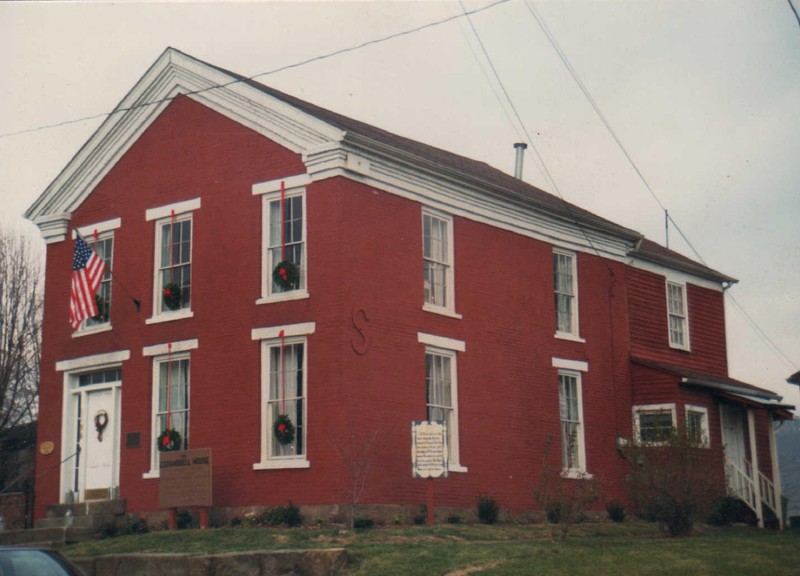
In 2019 the Town of Ceredo installed this monument in honor of Zophar, Almeda, and Carrie Ramsdell, who were buried on the property.
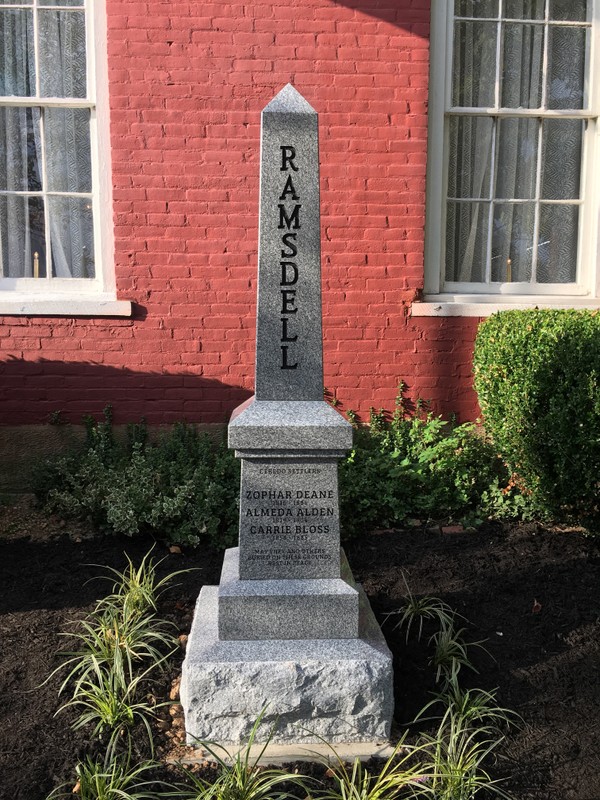
Backstory and Context
Text-to-speech Audio
The founder of Ceredo, Eli Thayer, was one of the most prominent abolitionists in American politics during the 1850s. He is particularly well-known for his involvement in “Bleeding Kansas,” by organizing a company for recruiting anti-slavery settlers to the Kansas Territory in 1854. Through this company, Thayer provided accommodations for anti-slavery settlers in Kansas and helped fund local industries and improvements in the towns they established. In founding the town of Ceredo in 1857, Thayer sought to replicate such towns in southern, slave states. Finding land in eastern Virginia too expensive for his purposes, Thayer purchased land at the convergence of the Ohio River and Twelvepole Creek in Wayne County.
One of Thayer’s most prominent supporters in this endeavor was Zophar D. Ramsdell (1816-1886), a Massachusetts native who moved to Ceredo with his family in September 1858. The family constructed their Greek Revival-style house soon afterwards, allegedly on top of a Native American burial mound. This mound was the highest point in town, and protected the home from multiple floods over the years. Local residents nicknamed the house Moundsville or Mound Cottage because of its location. The building materials included native sandstone blocks for the foundation and bricks produced in a local brickyard. There was also a barn beside the house and some land for farming, which Ramsdell took an active interest in. He lived in the house with his wife Almeda and their four children; Helen, Florence, William, and Carrie.
Ramsdell first opened a shoe and boot-making business in town. When the Civil War began he enlisted as a quartermaster in the 5th West Virginia Volunteer Infantry and rose through the ranks to become a captain under General Robert Milroy. After the war President Grant appointed him to be the local postmaster. Ramsdell briefly served in the West Virginia state senate and was a delegate to the national conventions that nominated presidents Grant, Hayes, and Garfield. He was also an active proponent of education, helping to form one of the first Free School laws for the state and serving as the first president of the Ceredo Independent School District board. He also invested in various local projects, including serving as president of a short-lived railroad company, and engaged in farming. Ramsdell died in 1886; his wife Almeda followed in 1904. They were each buried in the backyard along with their daughter Carrie, who had died during childbirth at the home in 1884.
Ramsdell was an abolitionist and tradition holds that his home was part of the Underground Railroad. With Ceredo being so close to the free state of Ohio, the Ramsdell House would have made an ideal location. Slaves conceivably could be hidden in the root cellar or in spaces underneath the floorboards, and then be smuggled at night across the Ohio River into Ohio. However no documented evidence has been found to support these claims. Rumors also circulated that a concealed basement existed underneath the house, or even an underground tunnel leading from the basement to the banks of the Ohio River, but its existence has never been proven.
Descendants of the Ramsdells continued to live in the house until around the early 1950s. For the next few decades afterwards it was rented out to various tenants. By the 1970s the house was attracting attention for its potential historic value. In 1976 it was added to the state’s register of historic sites. The following year a descendant of the family sold the property to Floyd Stark and Dan Ferguson, who then proceeded to construct an apartment building right next to the house. There was some controversy at the time because the graves of Zopher, Almeda, and Carrie Ramsdell were believed to exist at the proposed site of the building. No grave markers still existed however, and the apartments were built as planned. Afterwards Stark and Ferguson donated the Ramsdell House to the town of Ceredo.
In 1983 the Ceredo town council established the Ceredo Historic Landmarks Commission and tasked it with restoring the Ramsdell House. The structure at this point was in a state of severe deterioration. Reportedly large gaping holes were visible in the walls and ceilings, rooms had been significantly altered, and ivy grew all over the exterior. The Commission worked to get the Ramsdell House added to the National Register of Historic Places in 1983; from there it managed to secure $40,000 in grants and funding to restore the house. After a two-year series of renovations and rehabilitation, the house opened to the public in a formal ceremony on November 29, 1985.
In the years since its restoration, the Ramsdell House has served as a historic house museum and community center. It hosts guided tours, private events, and was also the site of Civil War reenactments and Christmas parties. During the 2000s and 2010s paranormal activity investigators frequented the house, claiming that it was haunted by the spirits of the Ramsdells, Civil War soldiers, or even Native Americans. By the late 2010s, neglect and a lack of funding caused the house to deteriorate yet again. In 2017 the house closed in order to undergo new structural repairs and remodeling. It reopened to the public in 2019. That same year the Ramsdell Ceredo Settlers Memorial was dedicated in front of the house, honoring the Ramsdells and anyone else buried on the property.
Sources
Guay, Jessica. "Paranormal investigations help preserve history of Ramsdell House in Ceredo." WCHS. October 31, 2016. Accessed January 24, 2017. https://wchstv.com/news/local/paranormal-investigations-help-preserve-history-of-ramsdell-house-in-ceredo.
Little, Glade. "Z.D. Ramsdell." E-WV: The West Virginia Encyclopedia. November 21, 2016. Accessed January 12, 2017. http://www.wvencyclopedia.org/articles/1984.
Napier, Mose A. Ceredo: It’s Founders & Families. Ceredo: Phoenix Systems, Ltd., 1989.
Massey, Tim R. "Refurbishing the 'charm' of an old relic." The Herald-Dispatch (Huntington, West Virginia), May 8, 1984.
Peyton, Dave. “Worth Saving: Ramsdell home in Ceredo put on inventory of historic places.” Herald-Dispatch. May 2, 1976.
Smith, Jennifer. “Historic Ceredo house lives, breathes history.” Herald-Dispatch. April 14, 2000.
Spencer, Chris. “The Z. D. Ramsdell House.” 50 Plus. November, 1997.
Switala, William J. Underground Railroad in Delaware, Maryland, and West Virginia. Mechanicsburg, PA: Stackpole Books, 2004.
Thompson, Robert M. Ramsdell: A Southern Yankee. Self-published, Lulu Press, 2018.
Thompson, Robert. “Ramsdell House key in Ceredo history.” Wayne County News. July 25, 2018.
Ramsdell House Facebook Page
Ceredo Historical Society Museum
Ramsdell House
Ceredo Historical Society Museum
Ramsdell House
Ramsdell House
